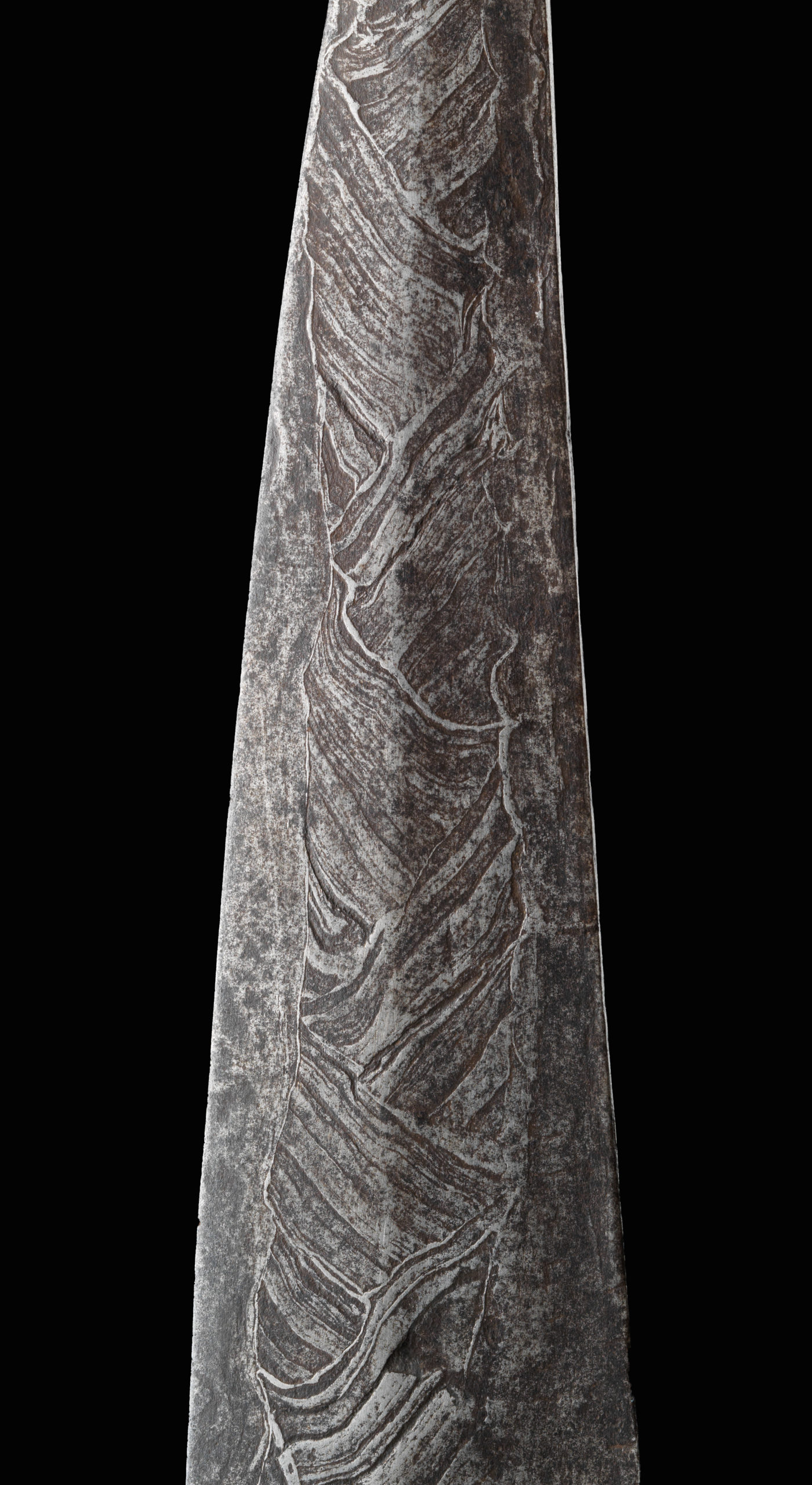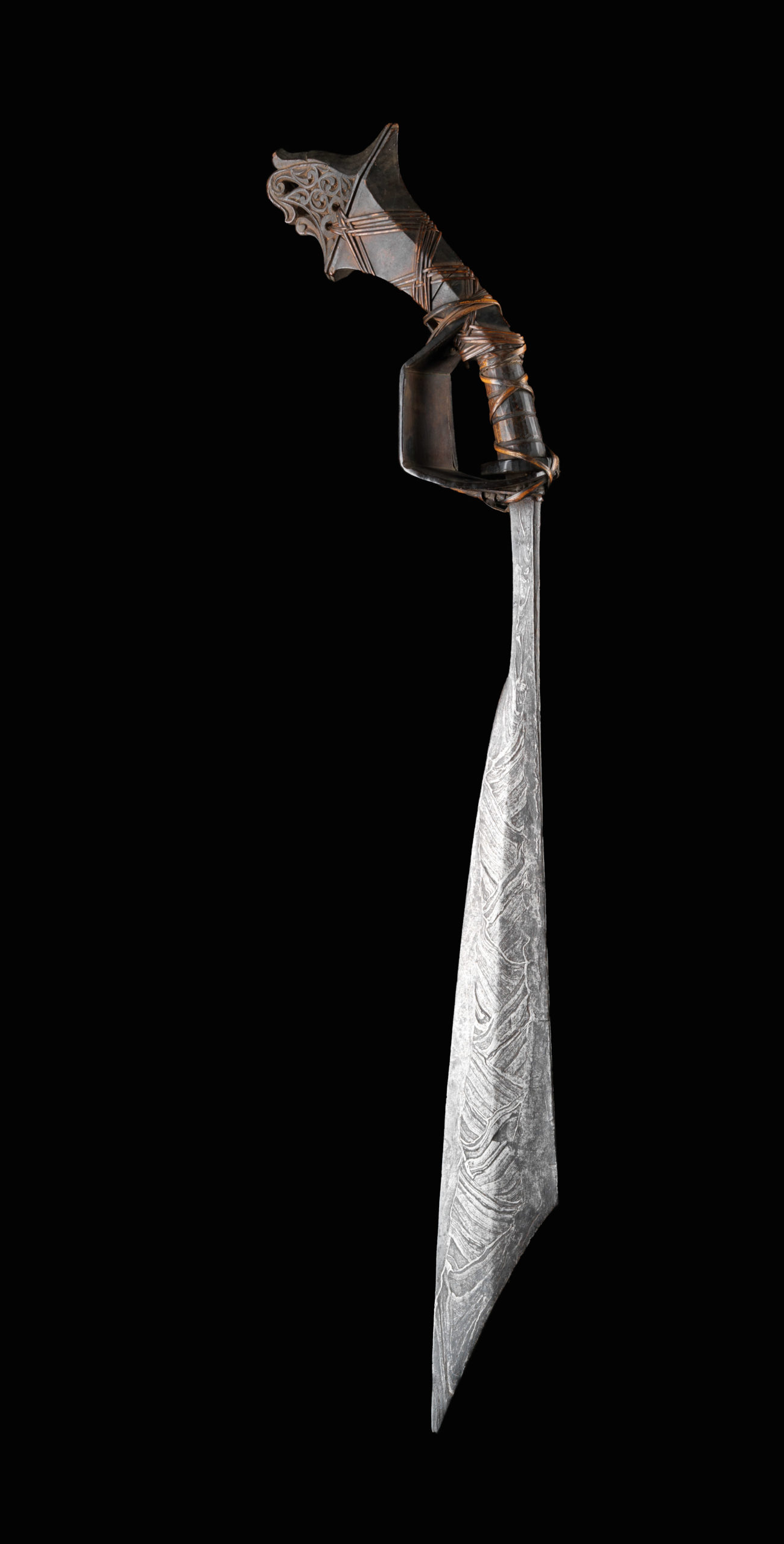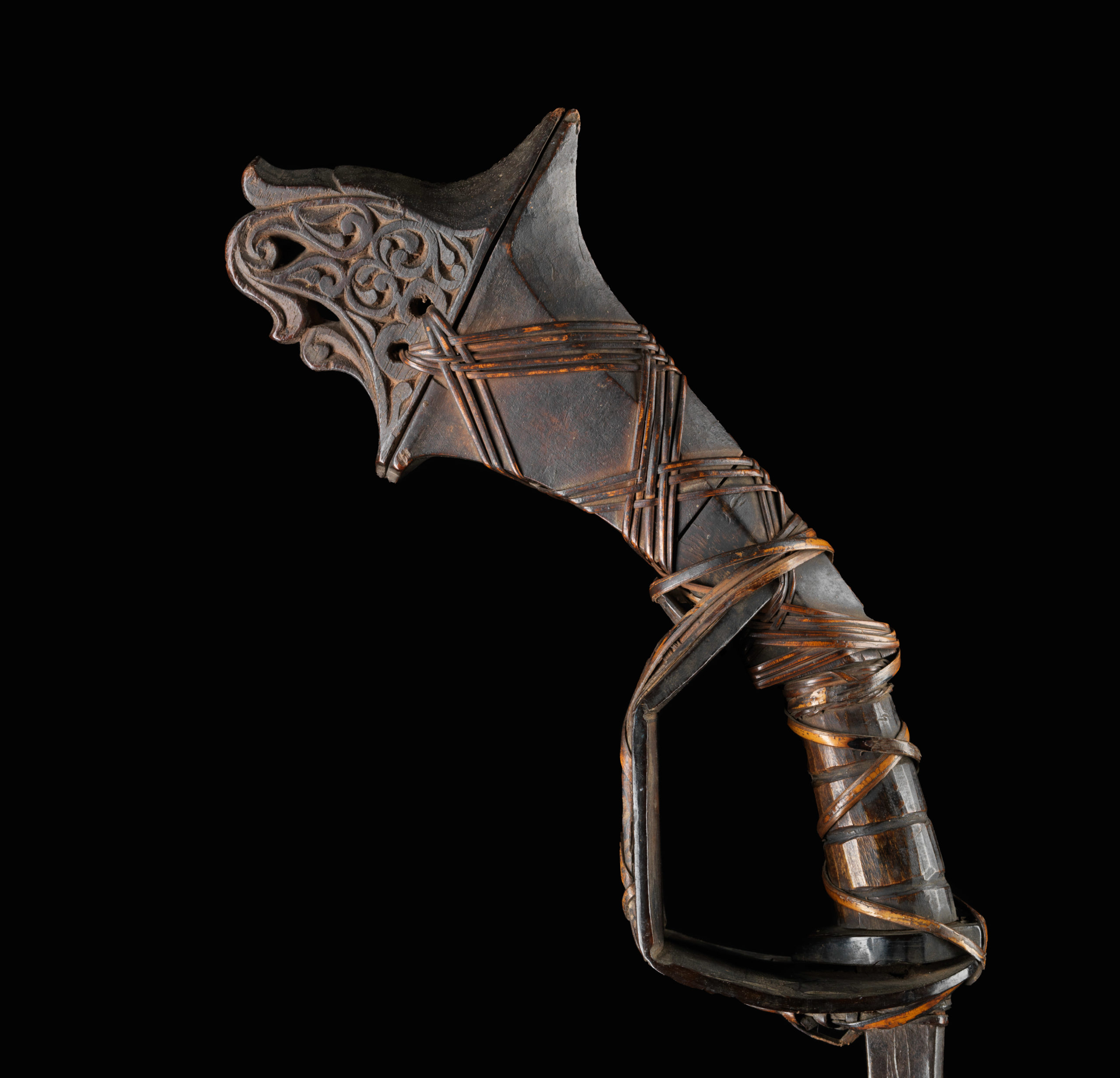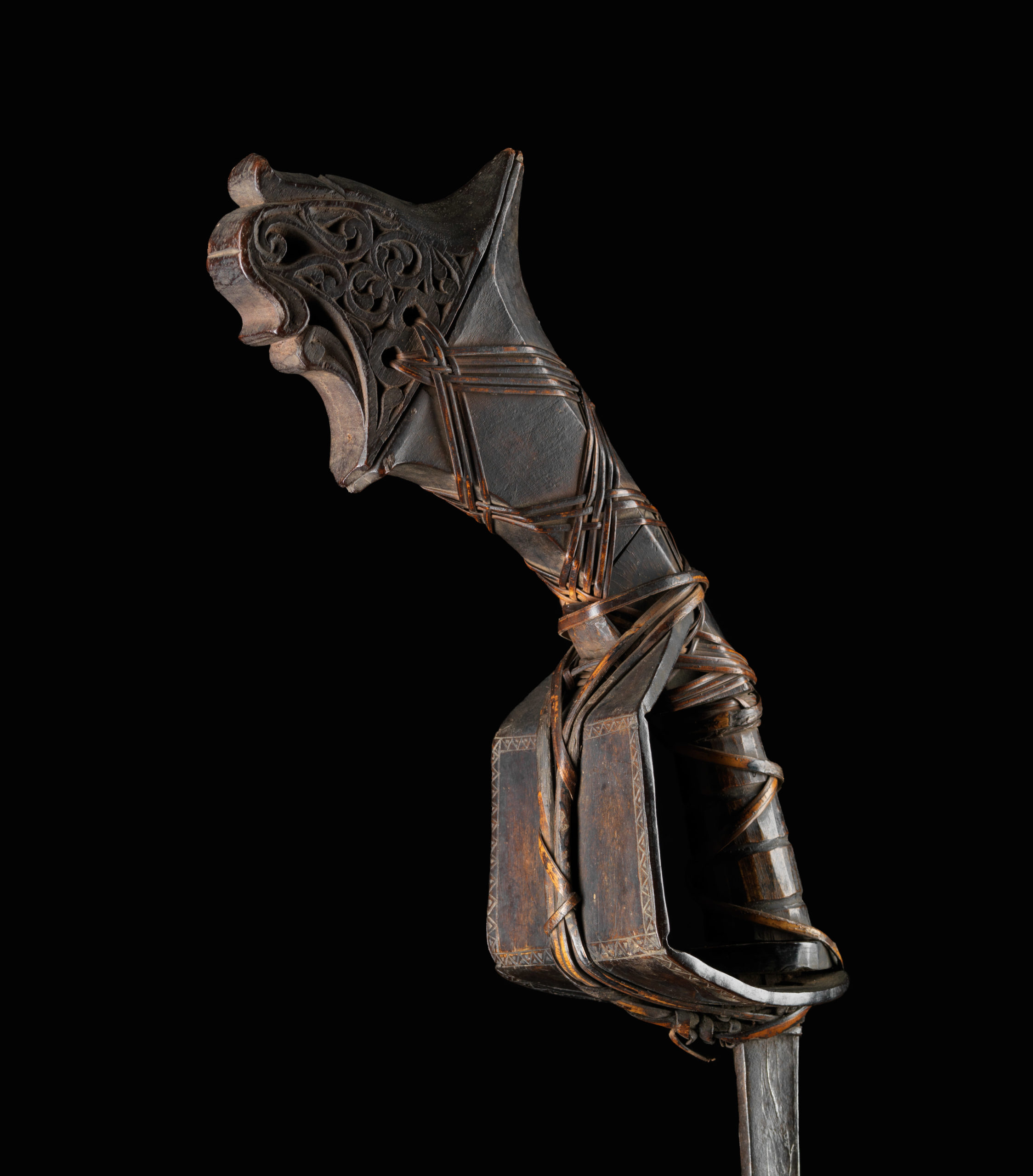Sword „pade, „klevang“
This sword is a pade or klevang, both terms cover a wide range of blade objects in the Southeast Asian archipelago and a precise categorical attribution is hardly possible. This is how bade is described – as badik, badi, bade-bade, badee etc. – also designates smaller knife-like forms in the Macassar-Buginese and West Javanese regions, while klevang (as kelewang, gliwang etc.) refers to an immense number of cutters from North Sumatra to the Moluccas. The term semarang can also be found.
The mighty blade, whose back is indented in the cutting area in order to achieve better cutting properties by reducing friction and to reduce weight, shows a rare welding pattern in which staggered standing pamor blocks were forged in mosaic technique onto a steel base which forms the cutting edge. The reverse side shows rudiments of pamor made of twisted rods, which have partly disappeared again due to abrasion during finishing or have been ground off over the centre. The base of the blade is designed as a narrow, thick neck, which makes it easier to carry and can be grasped if necessary. The “laid” pamor or mosaic pamor also occurs, although rarely, on swords from Sumba/Sumbawa, which can be attributed to the Buginese-Malayan context. The “magic” of iron or pattern making, which has a distinctly esoteric component in the East Malay and Buginese areas and in the Toraja, is expressed very strongly in these works.
The long handle, pulled down, is made of medium-hard wood. Its design corresponds largely to the belida form known on Flores. The hand guard, made of warmly bent buffalo horn, which can rarely also be made of shark skin, is fixed by rattan bands. It is likely that this element is due to European influences, as it often appears “put on”. The widened pommel tied up with rattan shows a stylised flower ornamentation. This is common throughout the “Celebes Sea”. It probably goes back to the redesign of stylised ancestral lines and double spirals, as can be seen in Dong-S’son and other continental Bronze Age cultures. It is strongly reminiscent of Illanún and southern Philippine art forms and can also be found in North Borneo (Dusun, Murut etc.) in a stupendously similar way. The relationship of the swords pade to Illanún- and Mindanao-kampilan is unmistakable. These large swords can be considered as a very old form predating the curved Malay (Iban) -dayak pedang and parang. Already in gold handles of the old Pinoy-cultures of the 10th – 13th century these protruding knobs are already placed. In the broadest sense, the blades may well go back to Indian steel blades of the first centuries A.D., as they are represented on candi Borobudur and Prambanan, for example; they are less associated with Chinese forms. The use of the pade as a cutting sword is always associated with the salawaku shield made of thick-walled soft wood, which is also known in Sulawesi.
| Object | Sword, “pade”, “bada”, “klevang”, “semarang” |
| Culture | South East Sulawesi/ Moluccas |
| Time | 18th / early 19th century |
| Dimensions | Length 84 cm |
| Material | Wood, steel, rattan |








